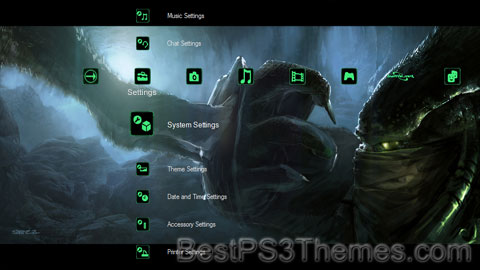Toronto FC theme by Raymond Regina
Download: TorontoFC.p3t
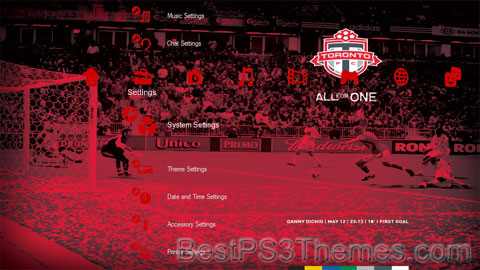
(3 backgrounds)
 | ||||
| Full name | Toronto Football Club | |||
|---|---|---|---|---|
| Nickname(s) | The Reds | |||
| Short name | TFC | |||
| Founded | October 27, 2005 | |||
| Stadium | BMO Field Toronto, Ontario | |||
| Capacity | 30,000[1] | |||
| Investor-operator[a] | Maple Leaf Sports & Entertainment | |||
| President | Bill Manning | |||
| General Manager | Jason Hernandez | |||
| Coach | John Herdman | |||
| League | Major League Soccer | |||
| 2023 | Eastern Conference: 15th Overall: 29th Playoffs: Did not qualify | |||
| Website | Club website | |||
|
| ||||
| Toronto FC | ||||||
|---|---|---|---|---|---|---|
| Active teams | ||||||
|
||||||
| Affiliates | ||||||
|
Toronto Football Club (commonly known as Toronto FC or TFC) is a Canadian professional soccer club based in Toronto. The club competes in Major League Soccer (MLS) as a member of the Eastern Conference. The team plays its home matches at BMO Field, located at Exhibition Place on Toronto's shoreline west of Downtown Toronto. Toronto FC joined MLS in 2007 as an expansion team and was the first Canadian-based franchise in the league.
The first team is operated by Maple Leaf Sports & Entertainment (MLSE), which also operates the MLS Next Pro affiliate team Toronto FC II and most other professional sports franchises in the city, like the Toronto Maple Leafs of the National Hockey League (NHL), Toronto Raptors of the National Basketball Association (NBA) and the Toronto Argonauts of the Canadian Football League (CFL).
In 2017, Toronto FC won a domestic treble with the MLS Cup, Supporters' Shield and Canadian Championship, making them the first and only MLS club to ever do so. They are eight-time winners of the Canadian Championship and were runners-up of the 2018 CONCACAF Champions League and the MLS Cup in 2016 and 2019.
As of 2023,[update] the club has an estimated value of US$690 million, making them the sixth most valuable club behind Los Angeles FC, LA Galaxy, Atlanta United FC, New York City FC, and D.C. United, and have the highest player payroll in Major League Soccer.[3][4][5]
History[edit]
Expansion[edit]
MLS awarded Toronto a team in 2005. Maple Leaf Sports & Entertainment (MLSE) paid US$10 million for the franchise.[6] The name of the team was announced on May 11, 2006.[7]
The announcement followed an online consultation in which the public was invited to vote on the name for a limited period. The voting options were "Toronto Northmen", "Inter Toronto FC", "Toronto Reds", and "Toronto FC". MLSE's strategy in choosing "Toronto FC" following this process was based on two reasons. Firstly, over 40 percent of the online vote supported the simple Toronto FC name during the consultation; secondly, MLSE hoped that the fairly generic name would help the new club earn a more organic nickname from the Toronto fans rather than having one imposed upon the team.[8] The team has been called "TFC" and "the Reds" by the media, the team, and the fans. The "FC" ("Football Club") in the club's name is the conventional initialism for association football teams across Europe and is commonly used among MLS teams to present a more authentic soccer brand.[9]
Formative years (2007–2010)[edit]

Despite a long scoreless streak to start the club's history, Toronto FC quickly began to establish itself as a club with significant fan support. The club's first win came on May 12, 2007, at BMO Field as Danny Dichio scored the team's first goal in the 24th minute of a 3–1 home win over the Chicago Fire.[10] Though TFC slipped to the bottom of the MLS standings with a record of 6–17–7, the team built a foundation as the first Canadian team in MLS. In the club's second season in 2008, Toronto hosted the 2008 MLS All-Star Game. The club finished last in the Eastern Conference with a record of 9–13–8, but the enthusiastic fan base continued to fill BMO Field to capacity.[11] To determine the Canadian Soccer Association's representative in the CONCACAF Champions League, Toronto FC played in the inaugural Canadian Championship in 2008 competing for the Voyageurs Cup. TFC were the favourites to win the championship in its first year, but the Montreal Impact prevailed.
The last-place New York Red Bulls defeated Toronto FC 5–0 in the final 2009 regular season game, leaving TFC one point out of the playoffs.[12] Despite bringing in some high-profile talent, the Reds could not seem to field a consistent side. Dwayne De Rosario became an immediate scoring influence and Amado Guevara was a strong playmaker and established MLS veteran, but the Honduran's future at the Canadian team seemed murky with looming 2010 FIFA World Cup duties. Rookie goalkeeper Stefan Frei quickly replaced Greg Sutton as a regular starter and immediately became a fan favourite. TFC only scored two goals in the final 15 minutes of games all season (last in MLS). During the same 15-minute period, they gave up 16 goals (most in MLS), thus creating a −14 goal differential during the final 15 minutes.[13]
In the 2009 Canadian Championship, Toronto FC required a four-goal victory over the Montreal Impact in the final game of the competition to nullify the Vancouver Whitecaps' +4 goal differential. Anything less would result in Vancouver winning the championship. Toronto FC went down 1–0 early but overwhelmed an under-strength Impact side 6–1 on the back of a hat-trick by De Rosario. Guevara added two, scoring in the 69th and 92nd minute. Chad Barrett scored the decisive goal in the 82nd minute, which gave TFC the lead over Vancouver. The unlikely victory was dubbed by fans and media as the "Miracle in Montreal".[14] Toronto FC subsequently participated in the 2009–10 CONCACAF Champions League, but lost 1–0 on aggregate to the Puerto Rico Islanders in the preliminary round of the tournament.[15]

After failing to qualify on the final day of the 2009 campaign, Maple Leaf Sports & Entertainment said anything short of a playoff spot in 2010 would be unacceptable. With that directive, former director of soccer Mo Johnston hired Preki[16] and made wholesale changes to the roster to reflect the U.S. Hall of Fame's plan to play a tough, defensive style. Despite scoring troubles, TFC played well at the start, going undefeated in seven games at one time. The team struggled following the World Cup break. Sensing problems in the locker room and to try to salvage the season, MLSE dismissed both Johnston and Preki on September 14, naming Earl Cochrane interim director of soccer and Nick Dasovic interim coach.[17] The players responded to Dasovic's more open flexible style, but it was not enough as the club was eliminated from playoff contention with three games left in the season. Off-field issues with season-seat holders over the 2011 season ticket package added to the fans' frustrations, forcing MLSE to hold a series of town hall meetings.[18]
Toronto FC played Honduran side C.D. Motagua in the preliminary round of the 2010–11 CONCACAF Champions League. TFC won 1–0 in the first leg on a goal by Chad Barrett, and tied 2–2 in the second leg on goals by De Rosario and Barrett, qualifying for the group stage. Toronto FC won their first group stage match 2–1 against Mexican side Cruz Azul on August 17, 2010.[19] However, the team failed to qualify for the championship round after finishing in third place behind group winners Real Salt Lake and second place Cruz Azul.
Cup success and league failure (2011–2014)[edit]
On November 3, 2010, MLSE announced the hiring of former German international and coach Jürgen Klinsmann, and his California-based company, SoccerSolutions, to fix the team's game.[20] Over the next six months, Klinsmann assessed the team, identifying a playing style, and recommended a candidate for the director of soccer position.[21] On January 6, 2011, the new management team for Toronto FC was announced. Aron Winter was hired as head coach with his compatriot Bob de Klerk named first assistant coach.[22] Paul Mariner was named as director of soccer. Winter was selected to bring the Ajax culture, possession and 4–3–3 system to Toronto FC. Management made wholesale changes to the roster before and during the 2011 season, trading numerous players and eventually their captain and Toronto native De Rosario.[23]

Toronto FC used its remaining two designated player slots on two notable European players, signing Torsten Frings and Danny Koevermans to 2.5-year contracts. The team went on to set a record for most players used in a MLS season with 39. Despite a strong finish to the season with only two losses in their last 12 games, TFC missed the MLS playoffs for a fifth straight year. Nonetheless, they earned a win in their final group stage match of 2011–12 CONCACAF Champions League visiting the FC Dallas, securing a berth in the knockout stage versus LA Galaxy. After a 2–2 draw in Toronto before 47,658 fans at the Rogers Centre,[24] Toronto FC defeated the Galaxy 2–1 in Los Angeles to reach the CONCACAF Champions League semi-finals, the first Canadian team to do so.[25] They were defeated by Mexican side Santos Laguna in the semi-finals 7–3 on aggregate.[26][27]
On June 7, 2012, Aron Winter resigned from the team upon refusing to be reassigned from his head coaching role after the team started the season with a nine-game losing streak, setting an MLS record for the worst start to a season.[28] Under Winter in 2012, the team's league record was 1–9–0 and in all other competitions was 3–1–4, including a fourth-straight Canadian Championship. He was replaced by Paul Mariner, but TFC continued to struggle finishing with a 4–12–8 record in league play under him.[29] Toronto FC also failed to advance in the CONCACAF Champions League, finishing second in its group with a 2–2–0 record. Overall, they finished the MLS season on a 14-game winless streak and ended up in last place, with five wins and 23 points.

It was announced Kevin Payne would be leaving D.C. United for the general manager position at Toronto FC on November 27, 2012.[30] First-time coach Ryan Nelsen replaced Mariner as of January 7, 2013.[31] On April 25, 2013, Payne signed the first young designated player in MLS, Matías Laba.[32] On July 9, Payne controversially traded Luis Silva to D.C. United for an undisclosed amount of allocation money.[33] The team fired Payne on September 4.[34][35] Following the removal of Payne, recently appointed MLSE president Tim Leiweke[36] reasoned that there were philosophical differences between them as to how Toronto FC should move forward.[37] Leiweke, who brought David Beckham to the LA Galaxy in early 2007, quickly revealed that he intended to make TFC more competitive with similarly ambitious, blockbuster signings.[38] On September 20, Toronto FC announced that the vacant general manager position had been filled by Tim Bezbatchenko.[39]
Under Bezbatchenko, Toronto FC made several high-profile moves during the 2013–14 off season. Among the transfers were MLS veterans Justin Morrow and Jackson; Brasileiro star Gilberto, United States international Michael Bradley of A.S. Roma, and the return of Toronto FC leading goal scorer De Rosario.[40][41] On January 10, 2014, Tottenham Hotspur announced they had agreed a deal with the team over the transfer of England international Jermain Defoe for a reported fee of £6 million, and an Advertising Rights Agreement with Maple Leaf Sports & Entertainment Ltd.[42] Defoe would earn a reported £90,000 a week, making him the highest earner in MLS.[43] These moves required the trade of Matias Laba to Vancouver to comply with MLS's maximum of three designated players per team. On February 7, 2014, Brazil national team keeper Júlio César joined on loan from Queens Park Rangers.[44] The team started the year with promise, but much like 2010, they floundered after the World Cup break. On August 31, Nelsen was fired by Bezbatchenko a day after a 0–3 defeat to the New England Revolution at BMO field, where Nelsen criticized Bezbatchenko in his post-match press conference for putting the players under needless pressure in the media. The head coaching position was filled by former American international and
LittleBigPlanet 3.0 theme by clcassar Download: LittleBigPlanet_3.0.p3t P3T Unpacker v0.12 This program unpacks Playstation 3 Theme files (.p3t) so that you can touch-up an existing theme to your likings or use a certain wallpaper from it (as many themes have multiple). But remember, if you use content from another theme and release it, be sure to give credit! Download for Windows: p3textractor.zip Instructions: Download p3textractor.zip from above. Extract the files to a folder with a program such as WinZip or WinRAR. Now there are multiple ways to extract the theme. The first way is to simply open the p3t file with p3textractor.exe. If you don’t know how to do this, right click the p3t file and select Open With. Alternatively, open the p3t file and it will ask you to select a program to open with. Click Browse and find p3textractor.exe from where you previously extracted it to. It will open CMD and extract the theme to extracted.[filename]. After that, all you need to do for any future p3t files is open them and it will extract. The second way is very simple. Just drag the p3t file to p3textractor.exe. It will open CMD and extract the theme to extracted.[filename]. For the third way, first put the p3t file you want to extract into the same folder as p3textractor.exe. Open CMD and browse to the folder with p3extractor.exe. Enter the following: The Future theme by Nonny Download: TheFuture.p3t Redirect to: Manchester United FC theme by Green Monkey Download: ManchesterUnitedFC.p3t Redirect to: The X-Files theme by Toto_devito Download: TheX-Files.p3t
The X-Files is an American science fiction drama television series created by Chris Carter. The original television series aired from September 1993 to May 2002 on Fox. During its original run, the program spanned nine seasons, with 202 episodes. A short tenth season consisting of six episodes ran from January to February 2016. Following the ratings success of this revival, The X-Files returned for an eleventh season of ten episodes, which ran from January to March 2018. In addition to the television series, two feature films have been released: The 1998 film The X-Files and the stand-alone film The X-Files: I Want to Believe, released in 2008, six years after the original television run had ended.
The series revolves around Federal Bureau of Investigation (FBI) Special Agents Fox Mulder (David Duchovny) and Dana Scully (Gillian Anderson), who investigate the eponymous "X-Files": marginalized, unsolved cases involving paranormal phenomena. Mulder is a skilled criminal profiler, an ardent supernaturalist, and a conspiracy theorist who believes in the existence of the paranormal, whereas Scully is a medical doctor and a skeptic who has been assigned to scientifically analyze Mulder's discoveries. Early in the series, both agents become pawns in a larger conflict and come to trust only each other and a few select people. The agents also discover an agenda of the government to keep secret the existence of extraterrestrial life. Mulder and Scully's shared adventures lead them to develop a close platonic bond, which by series' end develops into a romantic relationship. Roughly one third of the series' episodes follow a complex mythopoeia-driven story arc about a planned alien invasion, whereas the other two-thirds are "monster of the week" episodes that each focus on a one-off villain, mutant, or monster.
The X-Files was inspired by earlier television series which featured elements of suspense and speculative fiction, including The Twilight Zone, Night Gallery, Tales from the Darkside, Twin Peaks, and especially Kolchak: The Night Stalker. When creating the main characters, Carter sought to reverse gender stereotypes by making Mulder a believer and Scully a skeptic. The first seven seasons featured Duchovny and Anderson equally. In the eighth and ninth seasons, Anderson took precedence while Duchovny appeared intermittently. New main characters were introduced: FBI Special Agents John Doggett (Robert Patrick) and Monica Reyes (Annabeth Gish). Mulder and Scully's boss, Assistant Director Walter Skinner (Mitch Pileggi), also became a main character. The first five seasons of The X-Files were filmed and produced in Vancouver, British Columbia, before production eventually moved to Los Angeles to accommodate Duchovny. The series later returned to Vancouver to film The X-Files: I Want to Believe as well as the tenth and eleventh seasons.
The X-Files was a hit for the Fox network and received largely positive reviews, although its long-term story arc was criticized near the conclusion. Initially considered a cult series, it turned into a pop culture touchstone that tapped into public mistrust of governments and large institutions and embraced conspiracy theories and spirituality. Both the series itself and lead actors Duchovny and Anderson received multiple awards and nominations, and by its conclusion the show was the longest-running science fiction series in U.S. television history. The series also spawned a franchise that includes Millennium and The Lone Gunmen spin-offs, two theatrical films, and accompanying merchandise.
The X-Files follows the careers and personal lives of FBI Special Agents Fox Mulder (David Duchovny) and Dana Scully (Gillian Anderson). Special Agent Mulder is a talented profiler, conspiracy theorist, and an ardent supernaturalist. He is also adamant about the existence of intelligent extraterrestrial life and its presence on Earth. This set of beliefs earns him the nickname "Spooky Mulder" and an assignment to a little-known department that deals with unsolved cases, the X-Files. His belief in the paranormal springs from the claimed abduction of his sister Samantha Mulder by extraterrestrials when Mulder was 12. Her abduction drives Mulder throughout most of the series. Because of this, as well as more nebulous desires for vindication and the revelation of truths kept hidden by human authorities, Mulder struggles to maintain objectivity in his investigations.[5]
Special Agent Scully is a foil for Mulder in this regard. As a medical doctor and natural skeptic, Scully approaches cases with complete detachment, even when Mulder, despite his considerable training, loses his objectivity.[6] She is partnered with Mulder initially so that she can debunk Mulder's nonconforming theories, often supplying logical, scientific explanations for the cases' apparently unexplainable phenomena. Although she is frequently able to offer scientific alternatives to Mulder's deductions, she is rarely able to refute them completely. Over the course of the series, she becomes increasingly dissatisfied with her own ability to approach the cases scientifically.[7] After Mulder's abduction at the hands of aliens in the seventh season finale "Requiem", Scully becomes a "reluctant believer" who manages to explain the paranormal with science.[8]
Various episodes also deal with the relationship between Mulder and Scully, originally platonic, but that later develops romantically.[9] Mulder and Scully are joined by John Doggett (Robert Patrick) and Monica Reyes (Annabeth Gish) late in the series, after Mulder is abducted. Doggett replaces him as Scully's partner and helps her search for him, later involving Reyes, of whom Doggett had professional knowledge.[10][11] The initial run of The X-Files ends when Mulder is secretly subjected to a military tribunal for breaking into the top secret Mount Weather Emergency Operations Center and viewing plans for alien invasion and colonization of Earth. He is found guilty and sentenced to death but escapes punishment with the help of the other agents, and he and Scully become fugitives.[12]
As the show progressed, key episodes, called parts of the "Mytharc", were recognized as the "mythology" of the series canon; these episodes carried the extraterrestrial/conspiracy storyline that evolved throughout the series. "Monster of the week"—often abbreviated as "MOTW" or "MoW"—came to denote the remainder of The X-Files episodes. These episodes, forming the majority of the series, dealt with paranormal phenomena, including: cryptids, mutants, science fiction technology, horror monsters, and religious phenomena. Some of the Monster-of-the-Week episodes even featured satiric elements and comedic story lines.[13] The main story arc involves the agents' efforts to uncover a government conspiracy that covers up the existence of extraterrestrials and their sinister collaboration with said government. Mysterious men constituting a shadow element within the U.S. government, known as "The Syndicate", are the major villains in the series; late in the series it is revealed that The Syndicate acts as the only liaison between mankind and a group of extraterrestrials that intends to destroy the human species. They are usually represented by Cigarette Smoking Man (William B. Davis), a ruthless killer, masterful politician, negotiator, failed novelist, and the series' principal antagonist.[14]
As the series goes along, Mulder and Scully learn about evidence of the alien invasion piece by piece. It is revealed that the extraterrestrials plan on using a sentient virus, known as the black oil (also known as "Purity"), to infect mankind and turn the population of the world into a slave race. The Syndicate—having made a deal to be spared by the aliens—have been working to develop an alien-human hybrid that will be able to withstand the effects of the black oil. The group has also been secretly working on a vaccine to overcome the black oil; this vaccine is revealed in the latter parts of season five, as well as the 1998 film. Counter to the alien colonization effort, another faction of aliens, the faceless rebels, are working to stop alien colonization. Eventually, in the season six episodes "Two Fathers"/"One Son", the rebels manage to destroy the Syndicate. The colonists, now without human liaisons, dispatch the "Super Soldiers": beings that resemble humans, but are biologically alien. In the latter parts of season eight, and the whole of season nine, the Super Soldiers manage to replace key individuals in the government, forcing Mulder and Scully to go into hiding.[14]
Mulder and Scully came right out of my head. A dichotomy. They are the equal parts of my desire to believe in something and my inability to believe in something. My skepticism and my faith. And the writing of the characters came very easily to me. I want, like a lot of people do, to have the experience of witnessing a paranormal phenomenon. At the same time I want not to accept it, but to question it. I think those characters and those voices came out of that duality.
—Chris Carter on creating the characters of Mulder and Scully.[44] California native Chris Carter was given the opportunity to produce new shows for the Fox network in the early 1990s. Carter was tired of the comedies he had been working on for Walt Disney Pictures.[45] A report that said 3.7 million Americans believed they may have been abducted by aliens, the Watergate scandal, and the 1970s horror series Kolchak: The Night Stalker all contributed to trigger the idea for The X-Files. He wrote the pilot episode in 1992.[46]
Carter's initial pitch for The X-Files was rejected by Fox executives. He fleshed out the concept and returned a few weeks later, whereupon they commissioned the pilot. Carter worked with NYPD Blue producer Daniel Sackheim to further develop the pilot, drawing stylistic inspiration from the 1988 documentary The Thin Blue Line and the British television series Prime Suspect.[47] Inspiration also came from Carter's memories of The Twilight Zone as well as from The Silence of the Lambs, which provided the impetus for framing the series around agents from the FBI, in order to provide the characters with a more plausible reason for being involved in each case than Carter believed was present in Kolchak.[48] Carter was determined to keep the relationship between the two leads strictly platonic, basing their interactions on the characters of Emma Peel and John Steed in The Avengers series.[49][50]
The early 1990s series Twin Peaks was a major influence on the show's dark atmosphere and its often surreal blend of drama and irony. Duchovny had appeared as a transgender DEA agent in Twin Peaks and the Mulder character was seen as a parallel to that show's FBI Agent Dale Cooper.[51] The producers and writers cited All the President's Men, Three Days of the Condor, Close Encounters of the Third Kind, Raiders of the Lost Ark, Rashomon, The Thing, The Boys from Brazil, The Silence of the Lambs and JFK as other influences.[52] In addition, episodes written by Darin Morgan often referred to or referenced other films.[53]
Duchovny had worked in Los Angeles for three years prior to The X-Files; at first he wanted to focus on feature films. In 1993, his manager, Melanie Green, gave him the script for the
Final Fantasy X theme by Shanus Download: FinalFantasyX_2.p3t
Final Fantasy X[a] is a role-playing video game developed and published by Square as the tenth main entry in the Final Fantasy series. Originally released in 2001 for PlayStation 2, the game was re-released as Final Fantasy X/X-2 HD Remaster for PlayStation 3 and PlayStation Vita in 2013, for PlayStation 4 in 2015, Windows in 2016, and for Nintendo Switch and Xbox One in 2019. The game marks the Final Fantasy series transition from entirely pre-rendered backdrops to fully three-dimensional areas (though some areas were still pre-rendered), and is also the first in the series to feature voice acting. Final Fantasy X replaces the Active Time Battle (ATB) system with the "Conditional Turn-Based Battle" (CTB) system, and uses a new leveling system called the "Sphere Grid".
Set in the fantasy world of Spira, a setting influenced by the South Pacific, Thailand and Japan,[2] the game's story revolves around a group of adventurers and their quest to defeat a rampaging monster known as Sin. The player character is Tidus, a star athlete in the fictional sport of blitzball, who finds himself in Spira after Sin attacked his home city of Zanarkand. Shortly after arriving to Spira, Tidus becomes a guardian to summoner Yuna to destroy Sin upon learning its true identity is that of his missing father, Jecht.
Development of Final Fantasy X began in 1999, with a budget of more than $32.3 million ($59.1 million in 2023 dollars) and a team of more than 100 people. The game was the first in the main series not entirely scored by Nobuo Uematsu; Masashi Hamauzu and Junya Nakano were signed as Uematsu's fellow composers. Final Fantasy X was both a critical and commercial success, shipping over 8.5 million units worldwide on PlayStation 2. It is considered to be one of the greatest video games of all time. It was followed by Final Fantasy X-2 in March 2003, making it the first Final Fantasy game to have a direct game sequel. As of September 2021, the Final Fantasy X series had sold over 20.8 million units worldwide,[3] and at the end of March 2022 had surpassed 21.1 million.[4]
Like previous games in the series, Final Fantasy X is presented in a third-person perspective, with players directly navigating the main character, Tidus, around the world to interact with objects and people. Unlike previous games, however, the world and town maps have been fully integrated, with terrain outside of cities rendered to scale. As Tidus explores the world, he randomly encounters enemies. When an enemy is encountered, the environment switches to a turn-based battle area where characters and enemies await their turn to attack.[5]
The gameplay of Final Fantasy X differs from that of previous Final Fantasy games in its lack of a top-down perspective world map. Earlier games featured a miniature representation of the expansive areas between towns and other distinct locations, used for long-distance traveling. In the game, almost all the locations are essentially continuous and never fade out to a world map. Regional connections are mostly linear, forming a single path through the game's locations, though an airship becomes available late in the game, giving the player the ability to navigate Spira faster. Like previous games in the series, Final Fantasy X features numerous minigames, including the underwater sport blitzball.[6]
Final Fantasy X introduces the Conditional Turn-Based Battle (CTB) system in place of the series' traditional Active Time Battle (ATB) system first used in Final Fantasy IV. Whereas the ATB concept features real-time elements, the CTB system is a turn-based format that pauses the battle during each of the player's turns. Thus, the CTB design allows the player to select an action without time pressure.[7] A graphical timeline along the upper-right side of the screen details who will be receiving turns next, and how various actions taken will affect the subsequent order of turns. The ordering of turns can be affected by a number of spells, items, and abilities that inflict status effects upon the controlled characters or the enemies.[8] The player can control up to three characters in battle, though a swapping system allows the player to replace them with a character outside the active party at any time. "Limit Breaks", highly damaging special attacks, reappear in Final Fantasy X as "Overdrives". In this incarnation of the feature, most of the techniques are interactive, requiring button inputs to increase their effectiveness. While initially the Overdrives can be used when the character receives a significant amount of damage, the player is able to modify the requirements to unlock them.[9]
Final Fantasy X overhauled the summoning system employed in previous games of the series. Whereas in previous titles a summoned creature would arrive, perform one action, and then depart, the "Aeons" in X arrive and replace the battle party, fighting in their place until either the aeon wins the battle, is defeated itself, or is dismissed by the player. Aeons have their own statistics, commands, special attacks, spells, and Overdrives. The player acquires five aeons over the course of the game through the completion of Cloister of Trials puzzles; three additional aeons can be obtained by completing various side-quests.[6]
As with previous titles in the series, players can develop and improve their characters by defeating enemies and acquiring items, though the traditional experience point system is replaced by a new system called the "Sphere Grid". Instead of characters gaining pre-determined statistic bonuses for their attributes after leveling up, each character gains "Sphere Levels" after collecting enough Ability Points (AP). Sphere Levels allow players to move around the Sphere Grid, a pre-determined grid of interconnected nodes consisting of various statistic and ability bonuses. "Spheres" are applied to these nodes, unlocking its function for the selected character.[7]
The Sphere Grid system allows players to fully customize characters in contrast to their intended battle roles, such as turning the White Mage-roled Yuna into a physical powerhouse and the swordsman Auron into a healer. The International and PAL versions of the game include an optional "Expert" version of the Sphere Grid; in these versions, all of the characters start in the middle of the grid and may follow whichever path the player chooses. As a trade-off, the Expert grid has fewer nodes in total, thus decreasing the total statistic upgrades available during the game.[10]
Blitzball is a minigame that requires strategy and tactics. The underwater sport is played in a large, hovering sphere of water surrounded by a larger audience of onlookers.[8] The player controls one character at a time as they swim through the sphere performing passes, tackles, and attempts to score. The gameplay is similar to that of the main game in the way that the controlled character moves through the area until they encounter an enemy. In this case, the enemy is a member of the opposing team. Status effects are also implemented in the minigame as each player can learn techniques that are equivalent to abilities in the main game.[11]
Blitzball is introduced in the beginning of the game during one of the early cinematic sequences in which Tidus, the main character who is described as a star blitzball player, is part of an intense game. It is the only minigame that plays a role in the overall plot line as it is a main part of Tidus's character, and is in the first scene where the game's main antagonist, Sin is shown.[8] Unlike with the other minigames, playing blitzball is mandatory near the beginning of the game, but it is later optional.[11]
Final Fantasy X is set in the fictional world of Spira, consisting of one large landmass divided into three subcontinents, surrounded by small tropical islands. It features diverse climates, ranging from the tropical Besaid and Kilika islands, to the temperate Mi'ihen region, to the frigid Macalania and Mt. Gagazet areas. Spira is very different from the mainly European-style worlds found in previous Final Fantasy games, being much more closely modeled on Southeast Asia, most notably with respect to vegetation, topography, architecture, and names.[2]
Spira features a variety of races, though predominantly populated by humans. Among them are the Al Bhed, a technologically advanced but disenfranchised sub-group of humans with distinctive green eyes and unique language.[12][13] The Guado, which are less human in appearance, with elongated fingers and other arboreal features. Still less human are the lion-like Ronso and the frog-like Hypello. A subset of Spira's sentient races are the "unsent", the strong-willed spirits of the dead that remain in corporeal form. In Spira, the dead who are not sent to the Farplane by a summoner come to envy the living and transform into "fiends", the monsters that are encountered throughout the game;[14] however, unsent with strong attachments to the world of the living may retain their human form. Other fauna in Spira, aside from those drawn from real animals, such as cats, dogs, birds, and butterflies, include the gigantic, amphibious shoopufs (which are similar to elephants); and the emu-like chocobo, which appears in most Final Fantasy games.
There are seven main playable characters in Final Fantasy X, starting with Tidus (James Arnold Taylor/Masakazu Morita), a cheerful young teenager and a star blitzball player from Zanarkand, who seeks a way home after an encounter with Sin transported him to Spira.[12] To do so, he joins Yuna (Hedy Burress/Mayuko Aoki), a summoner on a journey to obtain the Final Aeon and defeat the enormous whale-like "Sin".[15] Journeying with them are: Kimahri Ronso (John DiMaggio/Katsumi Chō), a young warrior of the Ronso tribe who watched over Yuna during her childhood;[16] Wakka (also DiMaggio/Kazuya Nakai), a blitzball player whose younger brother was killed by Sin;[17][18] and Lulu (Paula Tiso/Rio Natsuki), a stoic black mage close to Yuna and Wakka.[15] During the journey, they are joined by Auron (Matt McKenzie/Hideo Ishikawa), a former warrior monk, who worked with both Tidus' and Yuna's fathers to defeat Sin 10 years prior;[19] and Rikku (Tara Strong/Marika Matsumoto), Yuna's cousin, a perky Al Bhed girl and the first friendly person Tidus meets upon arriving in Spira.[12]
Tidus waits with his allies outside the ruins of an ancient city. He narrates the events that led to the present, spanning most of the game's storyline.[20] It begins in his home city, the high-tech metropolis of Zanarkand, where he is a renowned blitzball player and son of the famous blitzball star Jecht, an abusive father who disappeared 10 years prior.[21] During a blitzball tournament, the city is attacked by an immense creature that Auron, a man not originally from Zanarkand, calls "Sin".[22] Sin destroys Zanarkand and takes Tidus and Auron to the world of Spira.[12] Upon arriving in Spira, Tidus is rescued by Al Bhed salvagers, with the young Rikku explaining that Sin destroyed Zanarkand 1,000 years ago.[23] After Sin attacks again, Tidus is separated from the divers and drifts to the tropical island of Besaid, where he meets Wakka, captain of the local blitzball team.[17] Wakka introduces Tidus to Yuna, a young summoner about to go on a pilgrimage to obtain the Final Aeon and defeat Sin[15][24] with her guardians Lulu, a mage of black magic, and Kimahri, a member of the Ronso tribe. The party travels across Spira to gather aeons, defending against attacks by Sin and its "offspring" called Sinspawn.[25] Tidus meets Auron again, who convinces Tidus to become Yuna's guardian upon revealing that Jecht is Sin's true identity.[26] Ten years ago, Auron and Jecht bodyguarded Yuna's late father Braska to defeat Sin but Jecht became a new Sin.[19] As Yuna's party continues their pilgrimage, Tidus reunites with Rikku, who the party learns is Yuna's cousin.[27]
When the party arrives in the city of Guadosalam, the leader of the Guado and major clergy member Seymour Guado, proposes to Yuna, saying that it will ease Spira's sorrow.[28] At Macalania Temple, the group discovers a message from the spirit of Seymour's father, Lord Jyscal; he declares that he was killed by his own son, who now aims to destroy Spira.[29] The group reunites with Yuna and kills Seymour in battle;[30] soon afterward, Sin attacks, separating Yuna and sending the others to the arid Bikanel Island.[31] While searching for Yuna at the island's Al Bhed settlement,[31] Tidus has an emotional breakdown when he learns that summoners die after summoning the Final Aeon, leading to his desire to find a way to defeat Sin while keeping Yuna alive.[32][33] The group finds Yuna in Bevelle, the center of the clergy’s power, where she is being forced to marry the unsent Seymour.[34][35] They crash the wedding, after which Seymour reveals his plan to become Sin with Yuna's help.[34] The party defeats him a second time and escapes with Yuna.[36] The group heads toward the ruins of Zanarkand, seen in the introduction of the game.[20][24][37]
Shortly before arriving, Tidus learns that he, Jecht, and the Zanarkand they hail from are summoned entities akin to aeons based on the original Zanarkand and its people.[38] Long ago, the original Zanarkand battled Bevelle in a machina war, in which the former was defeated.[39] Zanarkand's survivors became "fayth" so that they could use their memories of Zanarkand to create a new city in their image, removed from the reality of Spira.[39][40] Once they reach Zanarkand, Yunalesca—the first summoner to defeat Sin and unsent ever since[41]—tells the group that the Final Aeon is created from the fayth of one close to the summoner. After defeating Sin, the Final Aeon kills the summoner and transforms into a new Sin, which has caused its cycle of rebirth to continue.[42] The group decides against using the Final Aeon, due to the futile sacrifices it carries and the fact that Sin would still be reborn.[43] Yunalesca tries to kill Tidus' group, but she is defeated and vanishes, ending hope of ever attaining the Final Aeon.[44]
After the fight, the group learns that Yu Yevon — the deity of the Yevon religion who was a summoner from Zanarkand before losing his humanity and mind — is behind Sin's cycle of rebirth.[45] This leads the group to infiltrate Sin's body in order to find Yu Yevon. Inside Sin, the party finds the unsent Seymour, who had been absorbed by Sin and intends to control it from within. Yuna defeats him for the final time before sending him to the Farplane.[46] Shortly after, the group reaches the core of Sin and finds Jecht's imprisoned spirit.[47] Tidus and Jecht come to terms with the latter's abuse. Jecht transforms into his Final Aeon form, asking the party to defeat him and end the cycle; they do so. With Sin's host defeated, Yuna summons and the group defeats each aeon after Yu Yevon possesses each one until finally they vanquish Yu Yevon himself.[48]
Sin's cycle of rebirth ends when Yuna sends Sin and the Aeons to the farplane, and the spirits of Spira's fayth are freed from their imprisonment. Auron, who had been revealed to be unsent, is sent to the Farplane.[49][50] Dream Zanarkand and Tidus disappear, now that the freed fayth stopped the summoning.[51] Afterward, in a speech to the citizens of Spira, Yuna resolves to help rebuild their world now that it is free of Sin.[52] In a post-credits scene, Tidus awakens under water and swims towards the ocean surface.
Final Fantasy X's development began in 1999, costing approximately ¥4 billion (approximately $32.3 million, or $59.1 million in 2023 dollars)[53] with a crew of over 100 people, most of whom worked on previous games in the series. Executive producer Hironobu Sakaguchi has stated that although he had concerns about the transition from 2D to 3D backgrounds, the voice acting, and the transition to real-time story-telling, the success of the Final Fantasy series can be attributed to constantly challenging the development team to try new things.[2] Producer Yoshinori Kitase was also the chief director of Final Fantasy X, while the direction of events, maps and battles was split up between Motomu Toriyama, Takayoshi Nakazato and Toshiro Tsuchida, respectively.[54][55][56][57] The development of the script for the game took three to four months, with the same amount of time dedicated to the voice recording afterwards.[58] Tetsuya Nomura and Kazushige Nojima collaborated with Daisuke Watanabe, Toriyama and Kitase on writing the scenario for Final Fantasy X.[56][58] Nojima was particularly concerned with establishing a connection in the relationship between player and main character. Thus, he penned the story such that the player's progress through the world and growing knowledge about it is reflected in Tidus' own understanding and narration.[59]
According to the Square Enix companion book Final Fantasy Ultimania Archive Volume III, 17 SEVEN TEEN was a temporary title early in Final Fantasy X's production.[60] 17 SEVEN TEEN's story differed from the final version: the protagonist, who looked similar to Tidus,[61] traveled the world seeking a cure for a pandemic that killed people when they reached the age of seventeen. This inevitable death motif was later carried over to Yuna's fate as a summoner.
Character designer Tetsuya Nomura has identified the South Pacific, Thailand and Japan as major influences on the cultural and geographic design of Spira, particularly concerning the geographic location of the southern Besaid and Kilika islands. He has also said that Spira deviates from the worlds of past Final Fantasy games in the level of detail incorporated, something he has expressed to have made a conscious effort to maintain during the design process.[62] Kitase felt that if the setting went back to a medieval European fantasy, it would not seem to help the development team advance. While he was thinking of different world environments, Nojima suggested a fantasy world that incorporated Asian elements.[2]
Sub-character chief designer Fumi Nakashima's focus was to ensure that characters from different regions and cultures bore distinctive characteristics in their clothing styles, so that they could be quickly and easily identified as members of their respective sub-groups. For example, she has said that the masks and goggles of the Al Bhed give the group a "strange and eccentric" appearance, while the attire of the Ronso lend to them being able to easily engage in battle.[2] Tidus was originally envisioned to be a plumber as to connect to the underwater elements used in the game, according to Nojima, but they later made him into a blitzball athlete, helping to distinguish his character from prior Final Fantasy protagonists; Tidus' final outfit still incorporated elements of the original plumber outfit they had designed for him.[63]
Tidus' relationship with his father Jecht was based on "stories throughout the ages, such as the ancient Greek legends". This would eventually reveal the key of Sin's weakness and eventual defeat.[64] Auron was intended to be silent throughout the game but became a voiced character as they developed out the Guardian storyline between Tidus and Yuna.[63] Although Final Fantasy X was originally centered on the relationship between Tidus and Yuna, the addition of Jecht's character and his feud with his son was added later in the making of the game to provide more focus on how the father and son produce a bigger impact in Spira's history rather than the romantic couple. Kitase found the story between Tidus and Jecht to be more moving than the story between Tidus and Yuna.[65]
Final Fantasy X features innovations in the rendering of characters' facial expressions, achieved through motion capture and skeletal animation technology.[59][62] This technology allowed animators to create realistic lip movements, which were then programmed to match the speech of the game's voice actors.
The cutscene of Tidus and Yuna kissing was developed by Visual Works, a subsidiary of Square Enix. Many of the animators were not experienced with romance scenes - Visual Works director Kazuyuki Ikumori said that the animators sought feedback from younger staff at Square Enix, as well as female members of staff. The scene was remade multiple times after receiving responses that earlier drafts were "unnatural" and "not believable".[66]
Nojima has revealed that the inclusion of voice acting enabled him to express emotion more powerfully than before, and he was therefore able to keep the storyline simple. He also said that the presence of voice actors led him to make various changes to the script, in order to match the voice actors' personalities with the characters they were portraying.[67] The inclusion of voice, however, led to difficulties. With the game's cutscenes already programmed around the Japanese voice work, the English localization team faced the difficulty of establishing English-oriented dialogue and the obstacle of incorporating this modified wording with the rhythm and timing of the characters' lip movements. Localization specialist Alexander O. Smith noted that they had to keep the localized sound file within the duration of the original Japanese, as longer files would cause the game to crash.[68] He described the process of fitting natural-sounding English speech into the game as "something akin to writing four or five movies' worth of dialogue entirely in haiku form [and] of course the actors had to act, and act well, within those restraints".[69]
The game was initially going to feature online elements, offered through Square's PlayOnline service. The features were dropped during production, and online gaming would not become part of the series until Final Fantasy XI.[70][71] Map director Nakazato wanted to implement a world map concept with a more realistic approach than that of the traditional Final Fantasy game, in line with the realism of the game's 3D backgrounds, as opposed to pre-rendered backgrounds.[72] Battle art director Shintaro Takai has explained that it was his intention that battles in Final Fantasy X come across as a natural part of the story and not an independent element.[73] Features would have included wandering enemies visible on the field map, seamless transitions into battles, and the option for players to move around the landscape during enemy encounters.[69] However, hardware limitations resulted in these ideas not being used. Instead, a compromise was made, whereby some transitions from the field map to the battle map were made relatively seamless with the implementation of a motion blur effect that would happen at the end of an event scene.[59] The desire for seamless transitions also led to the implementation of the new summoning system seen in the game.[73]
As a player of the games in the Final Fantasy series, battle director Tsuchida wanted to recreate elements he found interesting or entertaining, which eventually led to the removal of the Active Time Battle system, and instead, incorporated the strategy-focused Conditional Turn-Based Battle system.[73] Kitase has explained that the purpose behind the Sphere Grid is to give players an interactive means of increasing their characters' attributes, such that they will be able to observe the development of those attributes firsthand.[74] At the time of the game's development, Nojiima had been reading about cryptography, and thus created the means to decode the Al Bhed language within the game, albeit simpler than initially planned.[63]
Final Fantasy X marks the first time regular series composer Nobuo Uematsu has had any assistance in composing the score for a game in the main series. His fellow composers for X were Masashi Hamauzu and Junya Nakano.[75] They were chosen for the soundtrack based on their ability to create music that was different from Uematsu's style while still being able to work together.[76] PlayOnline.com first revealed that the game's theme song was completed in November 2000. As Square still had not revealed who would sing the song, GameSpot personally asked Uematsu, who jokingly answered that it was going to be Rod Stewart.[77]
The game features three songs with vocalized elements, including the J-pop ballad "
Clan EVO theme by Spreken Download: ClanEVO.p3t P3T Unpacker v0.12 This program unpacks Playstation 3 Theme files (.p3t) so that you can touch-up an existing theme to your likings or use a certain wallpaper from it (as many themes have multiple). But remember, if you use content from another theme and release it, be sure to give credit! Download for Windows: p3textractor.zip Instructions: Download p3textractor.zip from above. Extract the files to a folder with a program such as WinZip or WinRAR. Now there are multiple ways to extract the theme. The first way is to simply open the p3t file with p3textractor.exe. If you don’t know how to do this, right click the p3t file and select Open With. Alternatively, open the p3t file and it will ask you to select a program to open with. Click Browse and find p3textractor.exe from where you previously extracted it to. It will open CMD and extract the theme to extracted.[filename]. After that, all you need to do for any future p3t files is open them and it will extract. The second way is very simple. Just drag the p3t file to p3textractor.exe. It will open CMD and extract the theme to extracted.[filename]. For the third way, first put the p3t file you want to extract into the same folder as p3textractor.exe. Open CMD and browse to the folder with p3extractor.exe. Enter the following: Cool Cars theme by billy Download: CoolCars.p3t P3T Unpacker v0.12 This program unpacks Playstation 3 Theme files (.p3t) so that you can touch-up an existing theme to your likings or use a certain wallpaper from it (as many themes have multiple). But remember, if you use content from another theme and release it, be sure to give credit! Download for Windows: p3textractor.zip Instructions: Download p3textractor.zip from above. Extract the files to a folder with a program such as WinZip or WinRAR. Now there are multiple ways to extract the theme. The first way is to simply open the p3t file with p3textractor.exe. If you don’t know how to do this, right click the p3t file and select Open With. Alternatively, open the p3t file and it will ask you to select a program to open with. Click Browse and find p3textractor.exe from where you previously extracted it to. It will open CMD and extract the theme to extracted.[filename]. After that, all you need to do for any future p3t files is open them and it will extract. The second way is very simple. Just drag the p3t file to p3textractor.exe. It will open CMD and extract the theme to extracted.[filename]. For the third way, first put the p3t file you want to extract into the same folder as p3textractor.exe. Open CMD and browse to the folder with p3extractor.exe. Enter the following: Fatal Elite 3 theme by Dicejss Download: FatalElite3.p3t P3T Unpacker v0.12 This program unpacks Playstation 3 Theme files (.p3t) so that you can touch-up an existing theme to your likings or use a certain wallpaper from it (as many themes have multiple). But remember, if you use content from another theme and release it, be sure to give credit! Download for Windows: p3textractor.zip Instructions: Download p3textractor.zip from above. Extract the files to a folder with a program such as WinZip or WinRAR. Now there are multiple ways to extract the theme. The first way is to simply open the p3t file with p3textractor.exe. If you don’t know how to do this, right click the p3t file and select Open With. Alternatively, open the p3t file and it will ask you to select a program to open with. Click Browse and find p3textractor.exe from where you previously extracted it to. It will open CMD and extract the theme to extracted.[filename]. After that, all you need to do for any future p3t files is open them and it will extract. The second way is very simple. Just drag the p3t file to p3textractor.exe. It will open CMD and extract the theme to extracted.[filename]. For the third way, first put the p3t file you want to extract into the same folder as p3textractor.exe. Open CMD and browse to the folder with p3extractor.exe. Enter the following:LittleBigPlanet 3.0
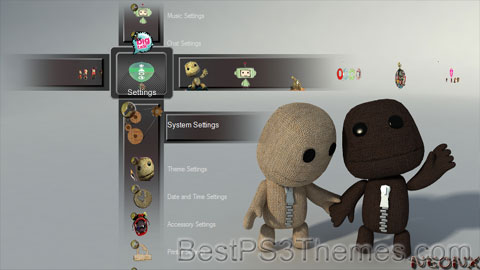
(11 backgrounds)
Copyright (c) 2007. Anoop Menon
p3textractor filename.p3t [destination path]Replace filename with the name of the p3t file, and replace [destination path] with the name of the folder you want the files to be extracted to. A destination path is not required. By default it will extract to extracted.filename.The Future
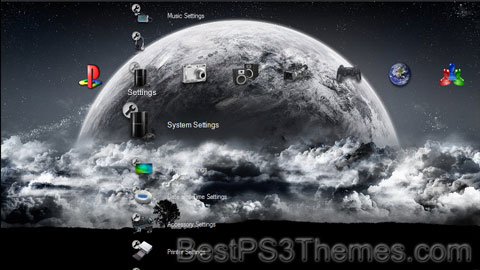
(4 backgrounds)
Starcraft 2
Manchester United FC

(5 backgrounds)
The X-Files
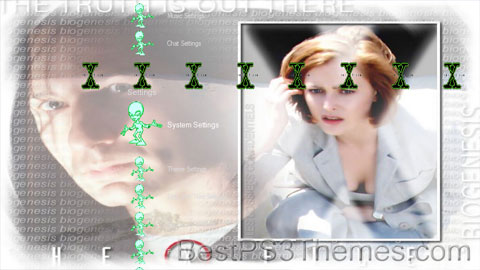
(6 backgrounds)
The X-Files 
Genre Created by Chris Carter Starring Music by Mark Snow Opening theme "The X-Files" Ending theme "The X-Files" Country of origin United States Original language English No. of seasons 11 No. of episodes 218 (list of episodes) Production Executive producers Production locations Cinematography John Bartley
Bill Roe
Joel Ransom
Jon Joffin
Craig Wrobleski
Ron Stannett
Thomas Del RuthRunning time 43–46 minutes Production companies Original release Network Fox Release September 10, 1993 –
May 19, 2002Release January 24, 2016 –
March 21, 2018Related Premise[edit]
General[edit]
Mythology[edit]
Cast and characters[edit]
Starring[edit]
Mulder is an Oxford-educated FBI Special Agent, a conspiracy theorist, a talented criminal profiler, and an ardent supernaturalist who believes in the existence of extraterrestrials and a government conspiracy to hide the truth regarding them. He works in the X-Files office, which is concerned with cases marked as unsolvable; most involve supernatural/mysterious circumstances. Mulder considers the X-Files so important that he has made their study his life's main purpose.[15] After his abduction by aliens at the end of season seven, his role in the show diminishes and much of his work is taken on by Special Agent John Doggett.[16] He appears in an episode of The Lone Gunmen and in both the 1998 film The X-Files and the 2008 film The X-Files: I Want to Believe.[17][18][19]
Scully is an FBI Special Agent, a medical doctor, and scientist who is Mulder's partner. In contrast to his credulity, Scully is a skeptic, basing her beliefs on scientific explanations.[7] However, despite her otherwise rigid skepticism, she is a Catholic, and her faith plays an important role in several episodes.[20] As the series progresses, she becomes more open to the possibility of paranormal happenings.[21] In the latter part of the eighth season, her position in the X-Files office is taken by Special Agent Monica Reyes, and Scully moves to Quantico to teach new FBI Special Agents.[22] She appears in both The X-Files feature films.[18][19]
Doggett is an FBI Special Agent who makes his first appearance in the season eight episode "Within". Doggett served in the United States Marine Corps from the 1970s to the 1980s. Later, he started to work with the New York City Police Department, reaching the rank of Detective.[23] After his son's death, he joined the FBI's Criminal Investigations Division.[24] In 2000, Alvin Kersh assigned him to the X-files unit as Scully's partner after an unsuccessful task force attempt to find Mulder.[23] He does not appear in The X-Files feature films.
Reyes is an FBI Special Agent who was born and raised in Mexico City.[25] She majored in folklore and mythology at Brown University and earned a master's degree in religious studies. Her first FBI assignment was serving on a special task force investigating satanic rituals.[26] She is a longtime friend of Doggett's and becomes his partner after Scully's departure.[22][26] She did not appear in The X-Files feature films.
Skinner is an FBI Assistant Director who served in the United States Marine Corps in the Vietnam War. During this time, he shot and killed a young boy carrying explosives, an incident which scarred him for life.[27] Skinner is originally Mulder and Scully's direct supervisor.[28] He later serves the same position for Doggett and Reyes.[23] Although he is originally portrayed as somewhat antagonistic, he eventually becomes a close friend of Mulder and Scully.[23][29] He appeared in an episode of The Lone Gunmen and in both The X-Files feature films.[19][30]Also starring[edit]
The Cigarette Smoking Man is the series' primary villain. In the ninth-season episodes "William" and "The Truth", it is suggested that he is Mulder's biological father.[31][32] In the seventh-season episode "Requiem", he is believed to have been killed after being pushed down a flight of stairs by Alex Krycek until the ninth-season finale "The Truth", in which Mulder and Scully travel through remote New Mexico and reach a pueblo where a "wise man" reputedly lives, who is revealed to be Cigarette Smoking Man.[12][29] He also appears in the 1998 feature film.[33]
Krycek is a Russian-American, the son of Cold War immigrants, and first introduced as an FBI Special Agent assigned as a temporary investigation partner to Fox Mulder.[34][35] Krycek proceeds to work with Mulder and attempts to gain his trust. However, it later becomes evident that Krycek is actually an undercover agent working for Cigarette Smoking Man. Krycek plays an important part in several events that are harmful to Mulder and Scully.[35][36][37][38][39]
Spender is a skeptic who is assigned to The X-Files after Fox Mulder's forced leave.[40] He is the son of Cigarette Smoking Man and his ex-wife, multiple abductee Cassandra Spender,[41] as well as possibly being the half-brother of Mulder.[31][32] Initially thought to have been murdered by Cigarette Smoking Man, Spender returns, horribly disfigured, in the ninth season and helps Scully's son William.[31]
As an assistant director (and later deputy director), he temporarily becomes supervisor to Special Agents Fox Mulder and Dana Scully when they are assigned away from the X-Files division.[40] During this time, Cigarette Smoking Man often visits him in his office.[42] Kersh assigns Mulder and Scully mostly to menial tasks, such as terrorist details and Federal background checks.[43] Kersh is largely antagonistic to Mulder and Scully but in "The Truth" somewhat redeems himself by helping Mulder escape a death sentence.[32]Production[edit]
Conception[edit]

Casting[edit]
Final Fantasy X #2
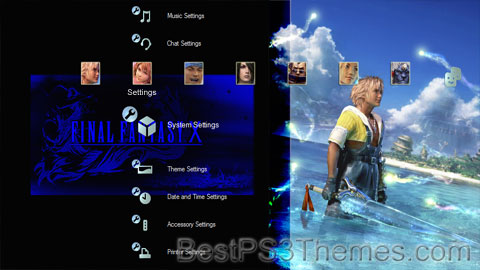
(4 backgrounds)
Final Fantasy X 
Developer(s) Square Product Development Division 1 Publisher(s) Director(s) Yoshinori Kitase Producer(s) Yoshinori Kitase Designer(s) Programmer(s) Artist(s) Writer(s) Composer(s) Series Final Fantasy Platform(s) PlayStation 2 Release International Genre(s) Role-playing Mode(s) Single-player Gameplay[edit]
Combat[edit]

Sphere Grid[edit]
Blitzball[edit]
Plot[edit]
Setting and characters[edit]
Story[edit]
Development[edit]
Influences[edit]
Design[edit]

Music[edit]
Clan EVO

(3 backgrounds)
Copyright (c) 2007. Anoop Menon
p3textractor filename.p3t [destination path]Replace filename with the name of the p3t file, and replace [destination path] with the name of the folder you want the files to be extracted to. A destination path is not required. By default it will extract to extracted.filename.Cool Cars

(9 backgrounds)
Copyright (c) 2007. Anoop Menon
p3textractor filename.p3t [destination path]Replace filename with the name of the p3t file, and replace [destination path] with the name of the folder you want the files to be extracted to. A destination path is not required. By default it will extract to extracted.filename.Fatal Elite 3
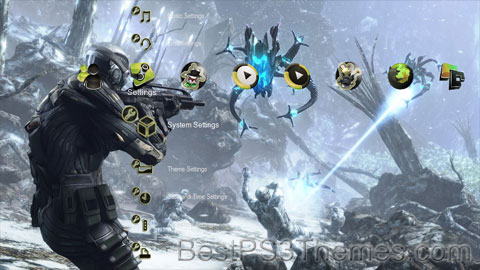
(10 backgrounds)
Copyright (c) 2007. Anoop Menon
p3textractor filename.p3t [destination path]Replace filename with the name of the p3t file, and replace [destination path] with the name of the folder you want the files to be extracted to. A destination path is not required. By default it will extract to extracted.filename.

